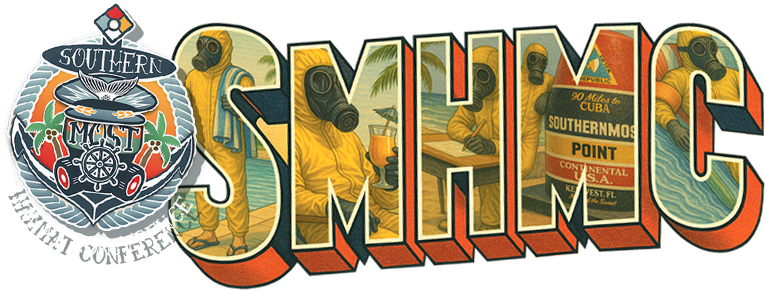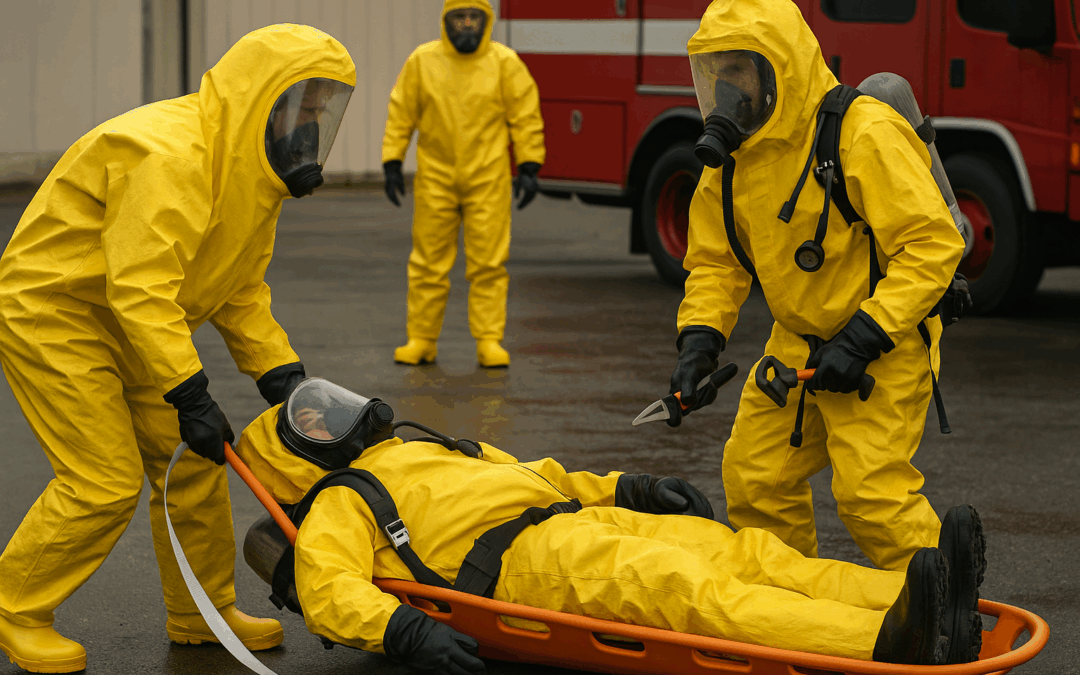Building a Rapid Intervention Team for Hazmat: Why It’s Time to Rethink the Backup Plan
I hopped on the call expecting another prepped and polished episode with Mike and Bobby, but this time, Mike threw a curveball – he blindsided Bobby with a topic they hadn’t prepared for: “What would it take to design a rapid intervention team specifically for hazmat?”
No script. No notes. Just two guys who’ve been in the field long enough to know that sometimes the best ideas come from the messiest conversations.
This post captures that unfiltered back-and-forth. It’s the kind of discussion we wish more departments were having – around the table, in the bay, or before the next big drill.
Wait – A Hazmat RIT? Why Now?
We’ve had RITs in the fire world for years. But hazmat? Not so much. The assumption has always been: if something goes sideways during a hazmat entry, the backup team will go in. But Mike challenged that.
“Backup teams are usually thought of as ‘pick up where the last guy left off,’ not as full-blown rescue teams,” he said.
Bobby agreed, adding that with modern suits like the 1994 Type 1, we’ve got more flexibility. “I can be in and out of that suit faster than a guy can throw on his bunker gear,” he joked.
That got us asking: what if a dedicated RIT could do a better job – quicker, safer, and more efficiently – than asking the backup team to wear two hats?
Training: Technician or Operations Level?
This question sparked a real debate. Mike posed a bold idea: maybe a hazmat RIT doesn’t even need to be tech-level certified. After all, their job isn’t mitigation – it’s grab-and-go.
Bobby initially hesitated, but then leaned in: “You give them the PPE, the basic ops-level training, and a very specific mission, and they could do the job. We ask ops-level people to do initial rescues all the time.”
The big idea here is separating function from certification. If someone’s only job is to pull a downed responder out of the hot zone, maybe the barrier to entry shouldn’t be so high. That could be a game-changer for smaller departments without hundreds of techs on call.
Gear Up: What a Hazmat RIT Really Needs
This part was gold. Instead of a standard firefighter FAST pack, what would a hazmat RIT need? Here’s what we came up with:
- Skeds or Stokes baskets for fast transport
- Suit slicers (think: seatbelt cutters but for Level A suits)
- Short webbing loops – small, simple, and effective
- Tools for suit removal, not just rescue
- At least one tech on the team for oversight and safety
Mike pointed out something critical: “If you’ve got three people all wearing Level As trying to pull a fourth guy out, that’s just compounding the problem.”
Bobby took it a step further: “We need a tool set that’s specific to hazmat – not screwdrivers, not irons. Maybe a pneumatic saw. Maybe extrication tools that work in contaminated environments.”
Bottom line: Fire tools ≠ Hazmat tools.
The Partner Isn’t Always the Rescue Plan
We all like to think our entry partner will save us. But what if they go down too? Or what if they’re physically unable to perform a rescue in their Level A suit?
“The assumption that the partner will handle the rescue just isn’t realistic,” Mike said. “Especially when that suit wasn’t designed for moving anything other than yourself.”
This led us to a strong conclusion: relying on the partner is not a plan – it’s a hope.
The Real Role of the Officer
This might’ve been one of the most underappreciated points of the night.
“When that mayday goes out, everyone wants to help,” Bobby said. “But that’s when you need an officer who can hold people back – who can say ‘no’ when others want to rush in without proper PPE.”
This officer isn’t just keeping the operation safe; they’re maintaining discipline at a moment when things can fall apart fast.
Let’s Talk Suit Removal
Mike brought up something we rarely train for: How do you get someone out of a Level A suit quickly?
We’ve all practiced putting them on – but taking them off in an emergency? That’s another story. Bobby brainstormed a “U-cut” down the back and over the cylinder. Mike floated the idea of slicing the suit in half from front to back.
We realized: no one really teaches this. But they should.
Emergency suit removal could make the difference between life and death, especially in a medical emergency where time is critical.
It’s Not a One-Size-Fits-All Answer
We’re not saying every hazmat run needs a full-blown RIT. If you’re sucking oil off a road, you probably don’t. But if you’re in Level A, downrange, or dealing with a known high-risk agent, you probably should.
Ask yourself:
- Do we have a backup plan beyond the backup team?
- Is anyone on scene thinking about what happens if we become the emergency?
- Do we have tools that can handle an unconscious firefighter in full PPE?
If the answer is no – or even “not really” – you’ve got some thinking to do.
This Isn’t Theory – It’s Accountability
There’s a legal and moral obligation here too. As Bobby said, “The ends justify the means. If you get the guy out safely, no one’s going to fault you for how you did it.”
But if you don’t get them out – if someone dies – and there was no plan in place? You’ll be asked why.
Saying “We never thought about that” isn’t going to cut it.
Final Thoughts: Start the Conversation Now
This whole episode was just the beginning. We didn’t have all the answers, but we started asking the right questions. You should too.
Have this conversation at the kitchen table. Run some drills. Ask your team: what would we do if one of us went down?
You don’t need a national standard to start preparing.



If you look at 29CFR1910.120, RIT is not a tech skill. It does not involve plugging and patching. OSHA requires a backup team in 1910.120 (HazMat) and 1910.134 (Respiratory Protection), a team operating at the ops level to dike a spill is still required to have a backup team. I’ve been teaching this for over a decade. Ops personnel can provide RIT duties. Working with CT DEEP HazMat for over 20 years, I made as many entries with ops personnel providing backup duties as with techs.
I’d be more than happy to join you to discuss on the podcast.
We are currently in discussion during the 470 revision meetings considering making this a technician skill. There is a meeting this coming Thursday, you should join. Bobby